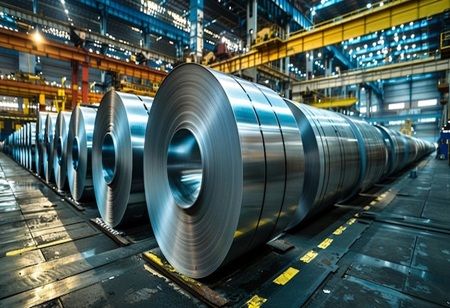
Govt to Roll Out Green Steel Mission to Cut Industry Emissions
- Govt preparing a ₹5,000 crore scheme to support sustainable steel production.
- Support planned through concessional loans, risk guarantees, and incentives.
- Initiative aligns with Green Steel Mission to cut emissions, aid net-zero goals.
Officials stated that the government is preparing a national initiative to promote the production of sustainable steel in the country as part of its strategy to decarbonise the industry. A senior government official indicated that the scheme’s scale for the mission is expected to be approximately ₹5,000 crore to assist both primary and secondary producers, mentioning that support might include a mix of concessional loans, risk guarantees, and various financial instruments.
"The scheme will be tailored for secondary steel producers, but primary producers will also be able to tap into it," the official told ET on condition of anonymity.
The plan is being finalized and could be implemented following required approvals from the upcoming financial year, as stated by the official. A report from the steel ministry recently highlighted the requirement for a complete financial plan to assist the industry's shift to green technology. Primary steel manufacturers utilize oxygen-based blast furnaces for steel production, whereas secondary steel manufacturers employ electric arc furnaces or induction furnaces for the same purpose.
India's secondary steel producers hold approximately 50% of the nation's overall production capacity. They rely on steel scrap and sponge iron for raw materials.
Experts indicate that it is essential for decarbonisation efforts to incorporate them. "Secondary producers contribute more than 50% of the domestic steel production, and because of the scale, relevance and contribution without decarbonizing this sector, India can’t achieve its net zero goals,” stated Amit Bhargava, National Leader, Metals and Mining, KPMG in India.
Also Read: Govt Cuts GST on Solar, Wind Energy to Boost Green Adoption
"Emission reduction through improved material efficiency, use of beneficiated iron ore and alternative fuel by the secondary steel industry will be the intended outcome of this scheme," said the official.
In accordance with the National Steel Policy of 2017, the steel ministry anticipates a decrease in carbon dioxide emissions to 2.6-2.7 tonnes per tonne of crude steel by 2030 via the electric arc furnace method. A report from the steel ministry indicates that primary steel producers have an average adoption rate of 50-60% for best technologies, whereas secondary steel producers have an adoption rate below 50%.
The steel ministry is independently developing a 'Green Steel Mission' aimed at assisting the steel sector in lowering emissions and reaching the net-zero goal. The initiative encompasses a Production Linked Incentive program for green steel, rewards for utilizing renewable energy, and requirements for government entities to purchase green steel.

